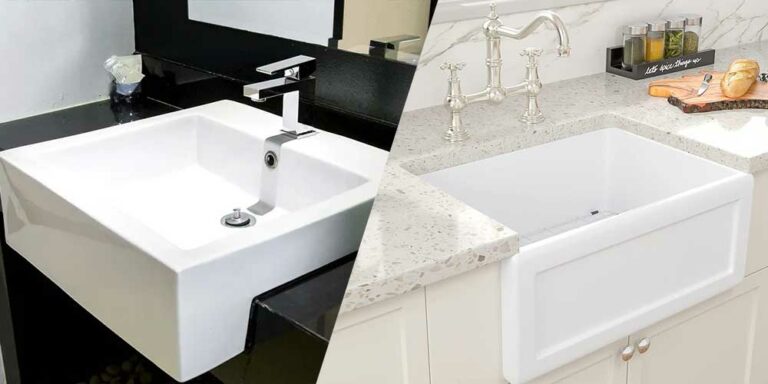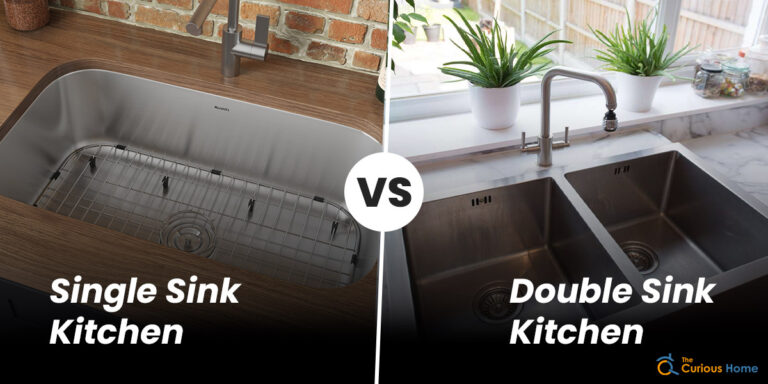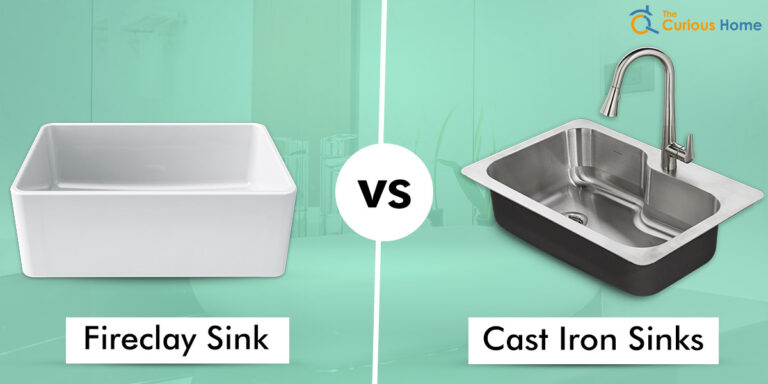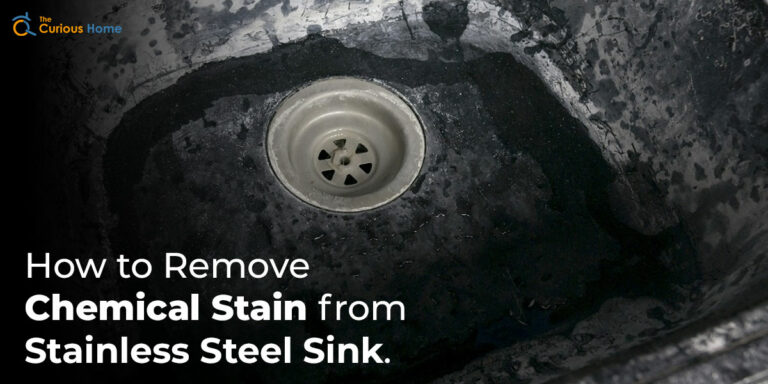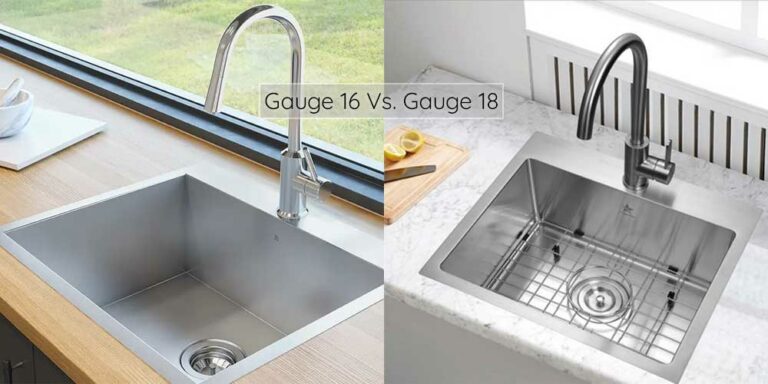Granite Composite Vs Stainless Steel Sinks | What’s the Difference?
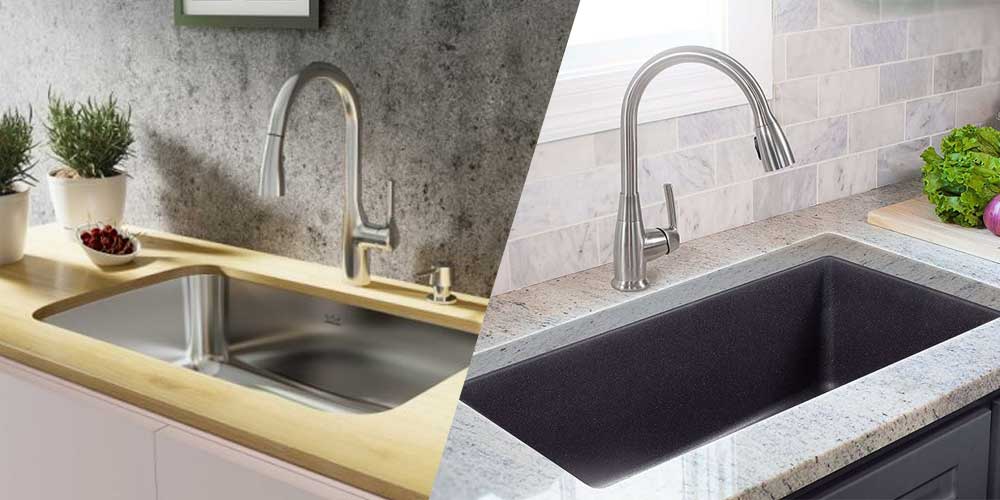
It’s never easy to select the ideal kitchen sink. Because of the wide variety of kitchen sinks readily accessible in today’s markets, this confusion is natural to exist. While almost any sink in a hardware store will do the job, not all sinks are created equal. The material of the sink influences its stain and heat resistance. The hardness of the material is also important in terms of noise and whether fragile dishes or glassware will shatter if dropped in the sink by accident.
Granite composite and stainless steel sinks are both designed for durability and economic viability, but this is where their similarities end. There is a big list of granite vs stainless steel sink factors that make them absolutely different from each other. Even lookwise, many people may prefer granite sink over stainless sink.
But then again budget comes to the picture. It becomes a dilemma which one to pick – stainless steel sink or granite composite. So, to give you some perspective, we are going to put up some granite composite sink vs stainless steel aspects for better understanding before you proceed to buy one.
What Is A Granite Composite Sink?
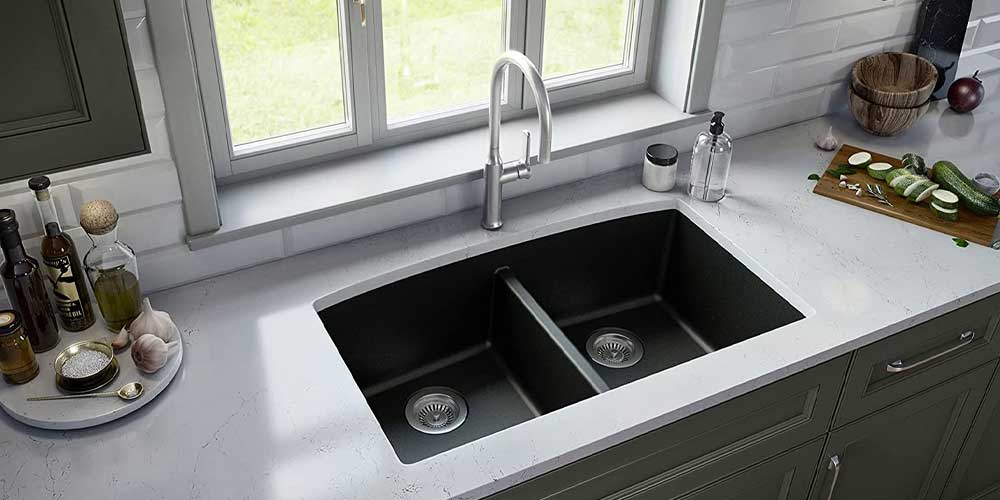
Granite sinks are a luxurious option for both kitchens and bathrooms. And they’re not as popular as other sinks, they add a one-of-a-kind touch to any room. These sinks are long-lasting and easy to clean, making them an excellent choice for a kitchen renovation or touch-up. A composite sink has a very smooth texture and does not resemble natural stone at all.
Granite composite sinks are composed of 95% natural stone and 5% resin. This synthetic material is made from a unique blend of natural stone crystals that are heated and sculpted into a hard surface. Crafted stone is ideal for achieving consistency in design and even, balanced strength.
Composite granite is tougher, heavier, and less expensive than natural granite. Because of its non-porous and stain-resistant nature, it retains its texture and strength well. Based on the manufacturer and the composition of the material, this type of composite sink may be labeled “granite,” “composite granite,” or “composite quartz.”
How Much Do Composite Sinks Cost?
Granite composite sinks, that are made of a blend of natural stone and resins, are less costly, costing between $300 and $600. The average price for a double-bowl composite kitchen sink is between $200 and $500. Those with a high proportion of quartz powder are less expensive than one with a greater amount of mineral granite. Here are some granite composite sinks we reviewed and found worthy of their price point. Drain strainers and faucets are listed individually. A decent faucet should cost approximately $100 to $150, and faucets with pull-out chutes start at the expensive side of that price range. Drain strainers range in price between $10 and $50.
The Upsides to Using A Granite Composite Sink
1. Durability
Composite granite sinks are scratch-resistant and durable due to the sturdy material and careful manufacturing method. But after a long time there are chances that your granite sink might develop cracks. This could be due to various reasons such as dropping heavy item on sink or not installing your sink properly. However there are ways in which you can fix your sink which I have discussed in my guide how to fix a cracked granite sink.
2. Anti-Bacterial Properties
Composite granite is the most sanitary material available. The manufacturing technique makes a perfect smooth texture and provides this sink with antibacterial properties, which help to keep pesky germs at bay.
3. Ease of Cleaning
One of the most significant benefits of composite granite over stainless steel is that it does not leave water spots, found it incredibly easy to maintain. This guide discusses how to clean and maintain a granite sink. It’s highly recommended to use a brush or washcloth, as well as a gentle dish soap, to make cleaning easier. If necessary, use a stiffer brush, but prevent using harsh chemicals.
4. Multiple Design Options
Granite sinks come in a range of eye – catchy design and color options. Consider the various granite countertop options. You can choose between neutral shades like black or tan and bold colors like blue or red. Brands like Elkay and Blanco make granite sinks in so many attractive finishes.
The Downsides to Using A Granite Composite Sink
1. Prone to harm
Harsh chemicals and abrasive cleaning pads can also wreak havoc on the sink’s appearance. Even strong alkali drain cleaners can cause damage to the sink surface. Metal products such as food cans left in the sink, as with almost any sink material, can end up leaving temporary rust stains on the composite material.
2. Hardness
Although some sink materials are more delicate than others, composite granite is tough enough to break glassware when slipped on the surface. If you frequently wash delicate dirty dishes, you should know that you can’t be clumsy while handling glass or chinaware in a granite sink. Granite composite is a rather unforgiving material and will cause your dear cutlery to break upon impact.
3. Price
High-quality composite granite sinks are more expensive than stainless steel and porcelain sinks.
What Is A Stainless Steel Sink?
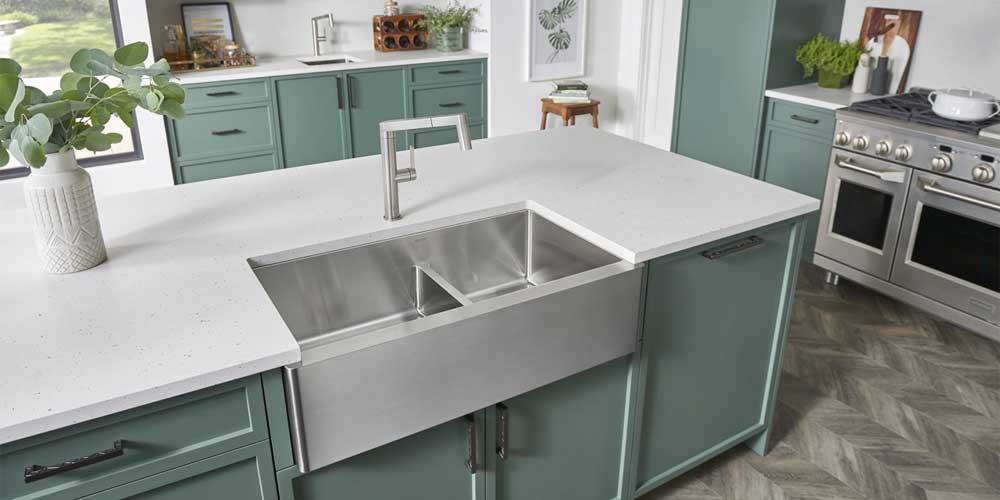
Stainless steel is a low-carbon steel with 10.5 percent or more chromium by weight. The addition of chromium gives the steel its distinctive stainless, corrosion-resistant, and improved mechanical properties. A stainless steel sink is one that has been formed by curving or shaping steel until it is flawless.
As an outcome, the sink is extremely tough and can endure a lot of trauma while still lasting a few years. It is the most commonly used sink material in both residential and commercial kitchens for more than a half-century.
Because stainless steel sinks are easily moldable in comparison to other materials, they can be created to fit into almost any shape profile or design you want, as long as you are willing to spend for it. Furthermore, because the surface is polished steel, cleaning a stainless steel sink is much easier than cleaning other materials such as granite or porcelain.
How Much So Stainless Steel Sinks Cost
Stainless steel is a decent choice for a sink material since it is pretty inexpensive. Stainless steel sinks generally cost from $50 to $1,000, vary based on the quality, materials, and brand. The majority of drop-in models cost between $150 and $300, while the majority of undermount models cost between $200 and $500.
We’ve compiled a list of some stainless steel sinks that you may want to consider. The gauge of the steel, or the thickness of the sink, has a significant influence on prices. The narrower the gauge, the denser the steel and, consequently, the higher the cost of the sink. The majority of home sinks are made of either 18- or 20-gauge steel.
The Upsides to Using A Stainless Steel Sink
1. Durable
Stainless steel is unbelievably durable! Because it will not chip, crack, fade, or stain, stainless steel is ideal for sinks and other case.
2. Affordable
Stainless steel is significantly less expensive than other materials, such as cast iron, granite, or porcelain, regardless of thickness or bowl design. Stainless steel can even save you money over time due to its durability, whereas other, less durable surfaces may need replacement.
3. Versatile
Stainless steel sinks are the neutral component for any granite countertop, which means they will complement any color or layout of kitchen, from contemporary to traditional. They are the most adaptable of all sink options, and they go well with the majority of stainless steel kitchen installations.
4. Easy to maintain
Stainless steel is easy to maintain and is unaffected by regular household chemicals. As a result, it is the perfect material for sinks in the kitchen and bathroom.
The Downsides to Using A Stainless Steel Sink
1. Lack of Variety
If you are looking for style that enhances the specific décor of your high-end kitchen, stainless steel will most likely fall short. Stainless steel sinks just lack variety. For this reason, these customers frequently select granite composite sinks for extravagant décor.
2. Prone To Scratching
Even though stainless steel sinks are extremely long lasting, they are still susceptible to damage from scratches caused by cleaning with an abrasive cleaner. Almost all of these sinks have a grain pattern, which becomes more dull when washed with an abrasive cleaner.
Granite Composite Vs Stainless Steel Sinks | Which Is A Better Option?
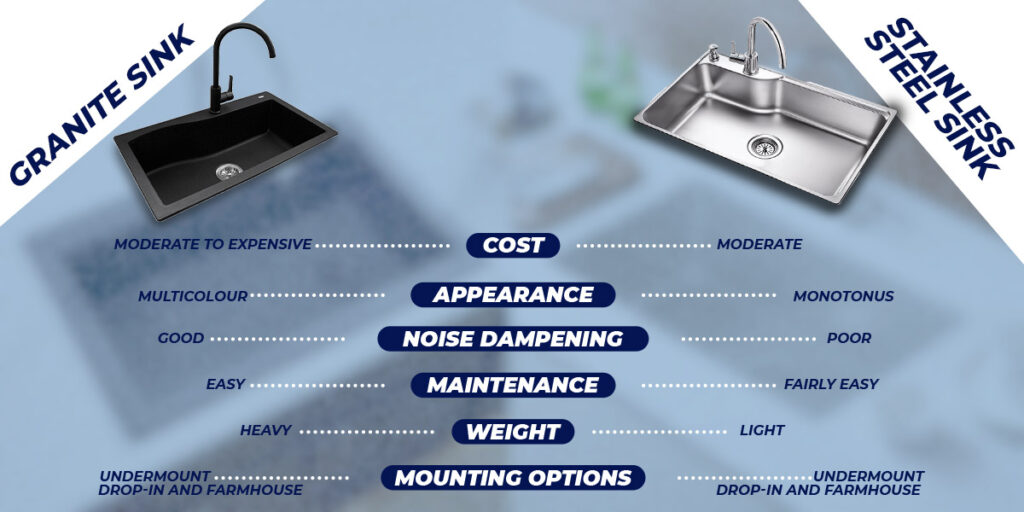
It’s an undeniable fact that both the granite composite and stainless steel sinks are a good option for your kitchen. But there are some aspects that might not suit your requirements. So, here are the granite sinks vs stainless steel aspects you should know before deciding the one for your kitchen.
1. Cost
The budget of the sink is usually the first consideration for most people. When it comes to costs, there is a wide range available at all price points for both granite or stainless steel sink. Composite and stainless steel sinks can both cost hundreds of dollars, depending on the size and sophistication of the design. A granite composite sink, for instance, is on the more expensive end of the spectrum.
Granite composite sinks are more costly than stainless steel sinks because they are of higher quality. Irrespective of thickness or bowl configuration, stainless steel is significantly less expensive than other materials such as granite or porcelain. Because of its durability, stainless steel can also save you money in the long run, whereas other, less durable materials may require replacement.
2. Appearance
Granite composite sinks are a great choice for a kitchen with a modern color scheme. Because composites are made up of a variety of materials, it’s simple to find one in a color that matches your kitchen, as is the case with a manufactured solid-surface countertop. Depending on the brand, there are a variety of colors to choose from that will complement most design schemes.
Because stainless steel is only available in one color, it may not be the best option if you’re trying to design a kitchen with a specific theme or look in mind. Abusive behavior can dent extremely thin gauge, inexpensive stainless sinks. However, technological and design advancements have created a wide range of style and configuration options.
3. Noise Dampening
Cheaper stainless steel sinks are made from very thin sheets of steel in order to reduce material costs. Because the material is so thin, it moves and vibrates much more easily. As a result, the basin can act like a drum, intensifying the impact of water (or any dropped object) on the sink’s bottom. This effect may be especially noticeable at nighttime, whenever a dripping tap in the kitchen downstairs may be audible from your bedroom.
Newer stainless steel sinks, on the other hand, have made significant improvement over their counterparts, with 16 and 18-gauge sinks becoming prevalent. Sound-muffling coatings over the steel or a spray coating on the underside of the sink are available on higher-end stainless steel sinks.
This can significantly reduce noise, but it will not completely eradicate it. Granite composite sinks, on the other hand, are much harder and less flexible, which dampens the vibrations caused by a dripping tap. However, while this hardness may eliminate the problem of noise pollution, it has its own drawbacks.
4. Maintenance
Cleaning a composite sink requires a little more aesthetics and dexterity. Abrasive or harsh substances should be avoided. Bleach, ammonia, food coloring, and drain cleaner, for example, all have the potential to discolor the sink. Gentle cleaning is almost always preferable to ‘deep’ cleaning on a regular basis – use a microfiber cloth and hot soapy water, and dry thoroughly when finished.
Despite the fact that they require more maintenance than other kitchen sinks, granite composite sinks are an excellent choice due to their long life, high durability, and wide range of colors. While they can withstand many of today’s stresses, they will become dull and discolored if not properly cared for. Cultivating the habit of caring for your sink will ensure that it lasts for a long time.
While it is recommended that you clean your sink once a week with water and a mild liquid soap detergent to keep the stainless steel gleaming. Metal scrub pads can scratch and deteriorate the stainless finish while also leaving metal shavings behind that cause rust. Stainless, due to its composition, heals itself of minor scratches in the majority of cases.
5. Weight and Mounting Options
Granite composite sinks are typically heavier than stainless steel sinks, so additional structural support beneath the sink may be required. They are readily accessible as top or under mount granite kitchen sinks, though many are dual-mount sinks these days. As a result, you won’t have to replace your countertop if you buy one.
Keep in mind that these sinks are significantly heavier than your average stainless steel or solid-surface sink, weighing up to 40 pounds in some cases. Granite composite sinks are heavy, similar to natural stone sinks. When compared to a lightweight stainless sink, they may require additional support when installed.
Because stainless steel weighs so much less than stone and composite sinks, it is often easier to install. If you hire a contractor to install the sink, this could result in a lower price. Even if they are dropped, there is little chance of damage.
6. Durability
Choosing a granite sink can make a big difference in your kitchen! A granite sink is typically composed of 80 percent granite and 20 percent acrylic resin, resulting in unrivaled durability! As a result, the sink, granite, and resins are long-lasting. Furthermore, the sink is resistant to change caused by external factors, making it the pinnacle of durability.
When you choose granite, you also get a sink that is scratch, stain, and heat resistant, which means you have less to worry about when banging around in the kitchen. You can enjoy a beautiful granite sink year after year with a little care and attention.
Stainless steel sinks, unlike other types of kitchen sinks, are extremely durable. Because it is made of steel, this sink is practically indestructible. The grade, series, and gauge of steel also influence how long the sink will last. It’s heatproof for everyday kitchen use and “heals” when its stainless surface is damaged by a scratch or slice. Items dropped in a stainless sink are less prone to breaking than items dropped in a composite or natural stone sink because the steel is thinner and flexes a little when needed.
Verdict | Should You Get A Granite Or Stainless Steel Sink?
Granite sinks and stainless steel sinks are as dissimilar as they come. Each has distinct benefits and drawbacks. Granite is less susceptible to deterioration and produces less noise than stainless steel; stainless steel is easier to maintain and less expensive than granite but lacks the variants and sturdiness of stone.
Stainless steel sinks have come a long way in the last few decades. In a nutshell, stainless steel is no longer dull; it can even be gorgeous. Stainless steel also complements other chrome and stainless kitchen appliances such as ovens, dishwashers, and refrigerators, creating a unified look throughout your kitchen.
To top it all off, stainless steel is 100 percent recyclable, so you know you’re doing your part for the environment. Overall, both types of sinks provide great quality and configurability, so the choice comes down to personal preference. Consider which sink will complement the design of your kitchen’s countertops, floating shelves, tapware, and appliances the finest. Lastly, if your are informed about the quality of the sink, you can be confident that you are getting a great sink that will last.

